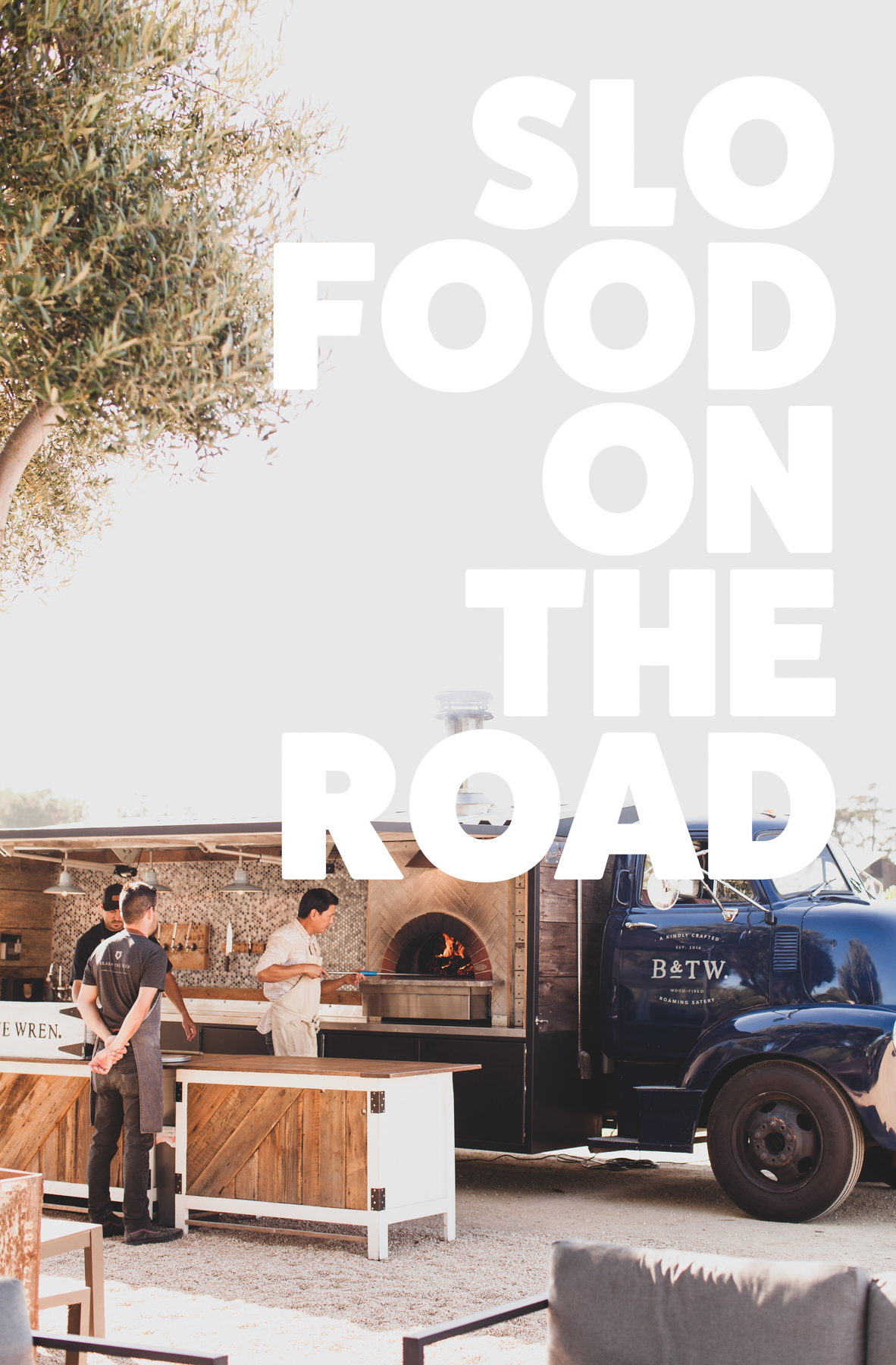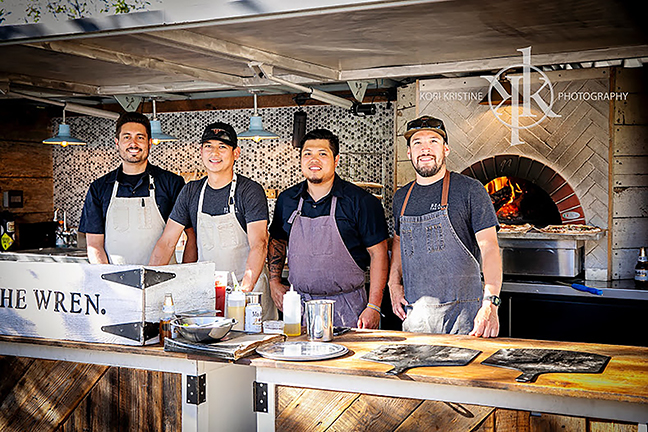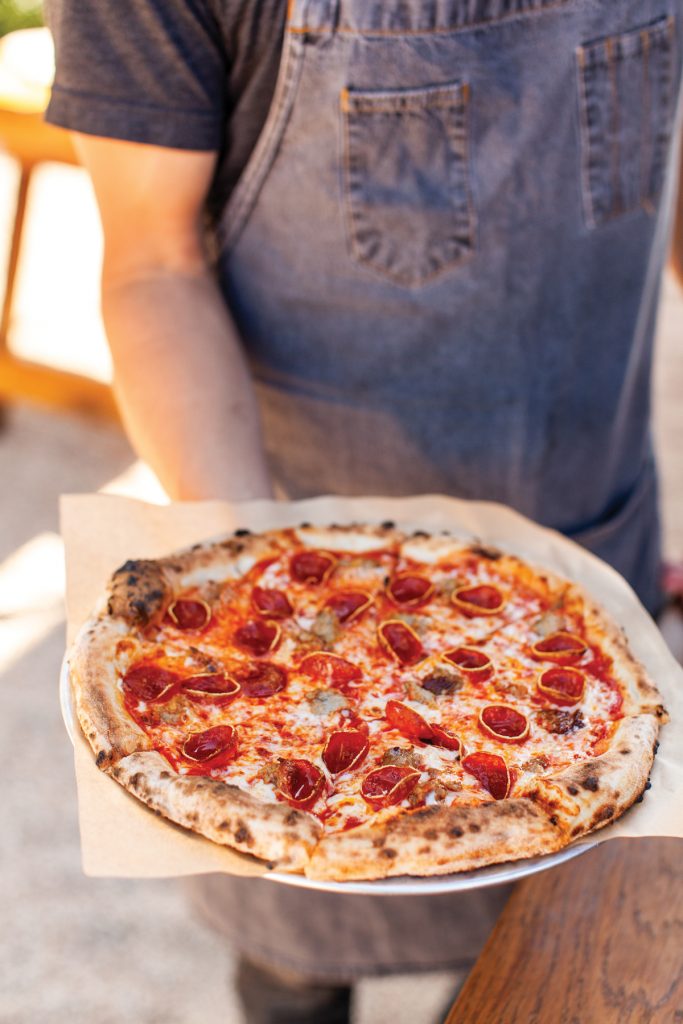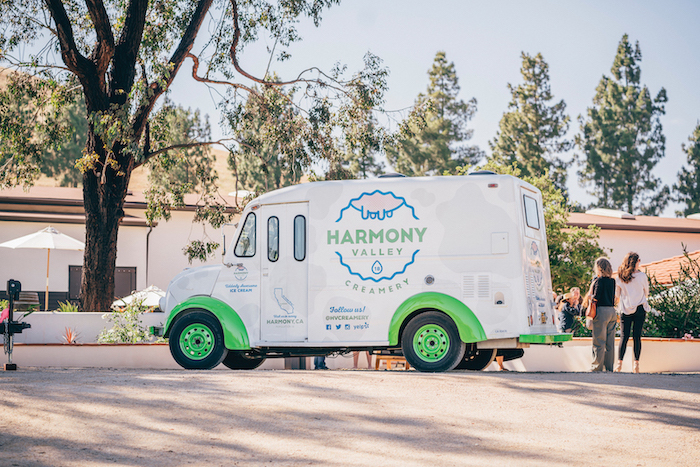
SLO Food On The Road
A look at the food truck revolution: past, present and most likely invited to your rehearsal dinner.
Photos by Jennifer Olson
Like many iconic culinary creations, the inception of the “food truck” is as hard to place as who invented pizza, noodles or the hamburger.
There are countless origin story articles online, but few make claims that can be substantiated by any factual evidence. Google searches are a mile wide but an inch thick. Food historians disagree and basically Italians claim to have invented everything, so relying on any individual narrative is shortsighted at best (no offense, Nona).
So how about a few relevant and significant milestones that actually check out? New York City first started regulating push cart food operators in 1691. The chuck wagon was invented by Charles Goodnight in 1866, and in 1894 sausage vendors starting selling tube steaks from “dog wagons” to hungry college students at Yale. You’d think it happened much sooner, but it wasn’t until 1974 when Raul Martinez started selling tacos out of a converted ice cream truck in front of an East Los Angeles bar.
So tell me, did food trucks start in New York in 1691 or in Los Angeles in the ’70s? What defines the modern food truck and when did this version come on the scene?
Presumably, this is an issue that requires some scope and context. Instead of trying to determine the origins of the modern day food truck, let’s define what exactly we’re talking about and then take a look.

For the sake of this article, a food truck is a licensed mobile food-service operation, recognized by the state or county and inspected by the local health department. This can be a cart, truck or trailer as long as it is mobile and a legitimate food service operation.
According to Andy Brennan, an analyst for IBISWorld, an industry market research firm, the number of food trucks in the U.S. doubled between 2007 and 2012. Unless you’ve been living under the hood of a 1984 Grumman delivery van for the past 10 years, you’ve likely noticed the explosion of trucks servicing virtually every major city in the country.
The two factors that most likely influenced this concept boom are the 2008 recession and social media.
Consider what most restaurant owners and chefs of high-end restaurants were thinking in the post ’08 recession food scene. An unprecedented number of restaurants shuttered. Chefs who once made six-figure salaries cooking for power-lunching corporate elites suddenly found themselves out of work and unable to swing the long dollar necessary for opening a brick-and-mortar restaurant. Order up some freshly made desperation, a steaming side of down-and-out skilled labor and top it off with the ability to self-promote in a way that had never before been possible. It’s the perfect recipe for a nouveau food truck scene that could turn a single traveling Oscar Mayer Wiener mobile into a full-scale indie-chef haute sausage party.
Now that we have an understanding of what’s been fueling these mobile kitchens nationwide over the past decade, let’s pull off at the next exit and step inside a few local rigs to meet the drivers — uh — owners of these notable concepts.
San Luis Obispo county poses some unique challenges to the food truck community. Unlike places such as Portland and Los Angeles, there is no food truck district in SLO, no food truck courts or parking lot locations designated to host mobile food vendors on a daily basis. So while food trucks in other areas take advantage of curbside locations where hungry folks regularly commute on foot, an ideal demographic for roadside meals, food trucks in SLO take advantage of the area’s plethora of event venues. From festivals and weddings to wineries and breweries, food truck owners in our area need to use creative ways to reach their customers.
What’s Under the Hood?
Bear & The Wren — What burns rubber and wood, but won’t burn your pizza?
Since the fall of 2016, Jason Barringer has been operating the Bear & The Wren, a mobile pizza and wood-fired catering concept, a mobile food operation as beautiful as it is expertly executed.

With a restored 1952 Chevy COE complete with an Italian pizza oven, four beers on tap and pretty much the most attractive catering set-up you’ve ever seen, B&TW is more likely to park the experience on the front lawn when most food trucks park on a side street. “We’ve catered all over SLO County, everywhere from barns in Edna Valley to Paso wineries to Piedras Blancas lighthouse,” says Jason Barringer, known as “The Bear” and Owner of B&TW. “Most often we’re a part of a life celebration like a rehearsal dinner, a wedding or a milestone birthday.”
It makes you wonder if any food-truck concept would be better off wood-fired and served off the back of a vintage snub-nosed Chevy. Come to think of it, how has no one built a Santa Maria grill into the back of a ‘67 El Camino?! While it certainly doesn’t hurt, it takes more than attractive branding to operate a successful mobile food service operation.

A scalable concept, deliberate menu design to support it and attractive yet sustainable pricing strategies cannot be underappreciated with mobile food businesses. Consider what types have been historically viable. You know them because they exist in every metropolitan city in the world; hotdog carts, taco trucks and ice cream trucks have been a part of the food truck scene forever because they are easy for the consumer to understand, offer a relatively affordable alternative to restaurants and can serve food in a fraction of the time it takes a restaurant.
At a B&TW event, it is obvious how well they understand all of this. It’s no wonder Barringer and his team of chefs are preparing to open their first brick-and-mortar location. Slated for fall of this year, the B&TW restaurant will open in the Creamery Marketplace in Downtown SLO. If what they’ve accomplished on the road is any indication of what they’ll be able to do with a permanent parking spot of their own, Downtown SLO should expect an exciting new eatery that is sure to fire on all cylinders.
The Harmony Valley Creamery Scoop Truck — An “Udderly Unique” food truck concept
The Harmony Valley Creamery Association was first established in 1913 in the town of Harmony, California, population 18. A few years ago, the community, along with the old creamery building, was purchased, and the Harmony Valley Creamery brand was re-imagined as a small-batch ice cream concept by San Luis Obispo local and Harmony Valley Creamery President, Tom Halen.

The two vintage Divco milk trucks started serving ice cream in 2016 and have since become a staple at local community events and farmers’ markets. Tom advises, “Our 1957 scoop truck primarily operates in the town of Harmony. You can find it scooping daily during the summer, and weekend only the rest of the year, and the 1964 scoop truck at the Thursday night farmers’ market in Downtown SLO and at various local festivals, wineries and private events including weddings throughout SLO County.”
Not only are the ice cream trucks a way to get creamery’s products directly into the hands of local consumers, perhaps the most effective way to capture a retail margin without the overhead of a traditional brick-and-mortar ice cream shop, but they’re also a great way for Tom to market test some of his creative recipes.

Tom, a former professional pastry chef and restaurateur, has created ice cream recipes in collaboration with local businesses such as coffee roasters and wineries, with staple flavors like Mayor Freddy’s Vanilla Bean, Blue Door Butter Pecan and Harmony Chapel Chocolate, each inspired by the colorful history of the “pint-sized” town of Harmony.
The Harmony Valley Creamery brand ice creams are also sold in pints at local grocery stores like Ralphs, California Fresh, Spencer’s and Cookie Crock. While delicious, the ice cream is also an exportable and edible advertisement for the town of Harmony, as the creamery serves smiles and scoops out craft ice cream wherever they go, like mobile brand ambassadors.
Cuyama Kitchen / Cocina Cuyama — Feeding the entrepreneurial spirit of a rural community
Can a food truck provide more for its community that just sustenance? At the Blue Sky Center, a non-profit organization dedicated to supporting entrepreneurs and fostering economic development in the rural community of New Cuyama, they believe it can.
New Cuyama is a small town on Highway 166 which just about straddles San Luis Obispo and Santa Barbara counties. Back in the late ’40s New Cuyama was a thriving community funded by some of the most productive underground oil deposits in California. New Cuyama was literally built by ARCO, but eventually the oil company left, as did the industry and the opportunity for most Cuyama residents to live and work in their high-desert town. You can imagine what this extractive legacy can do to such a place.
Blue Sky Center believes in the power of food to create community, and the power of community to create sustainable local food-based economies. After a year and a half of extensive community outreach, Blue Sky Center determined that a community kitchen would be the most valuable asset for New Cuyama. The non-profit purchased a commercial catering trailer complete with refrigeration, a grill, stove, fryers and hand washing stations and registered it with the county as a commercial kitchen. Cuyama Kitchen / Cocina Cuyama was born.

By creating a space where local food entrepreneurs can test their concepts and caterers can pop up to serve at local gatherings, Blue Sky’s investment in their community is paying off. “The most successful uses of the trailer have been youth groups utilizing the Cuyama Kitchen for fundraising events, and local caterers and producers utilizing the Cuyama Kitchen to validate their business, market or product ideas,” says Em Johnson, Executive Director of the Blue Sky Center. “The Cuyama Kitchen has helped to fill a gap of inclusive gathering spaces in our rural community by providing experiences that are culturally specific and engaging in programming, reaching a multi-generational audience.“

The mobile food service platform can be used by any resident, organization, caterer or cottage food entrepreneur. It can be set up at the local pool, football stadium or park. Wherever people gather to share the experience of community, the Cuyama Kitchen can be there to feed them.
By providing this platform, Blue Sky Center is serving as both start-up investor and small business incubator. While tough to put a figure on it, this food truck is certainly playing an invaluable role in creating ”resilient, thriving and inclusive rural economies.”
Further Down the Road
So what do wood-fired pizza, small-batch ice cream and a mobile community kitchen have in common? All of the concepts share characteristics that are vital to the long-term viability of a mobile food operation in our area. Each has a strong sense of identity connected to the locale it serves, unique platforms for reaching its audience, creative ways to diversify revenue streams and plans for how the businesses will evolve.
Without the ability to park in a food truck court every day and without a guaranteed window of time in which to do business, these unique and diversified food truck models might be taking the road less traveled. But around here, this just might be the most direct route to success.
Check out these other great mobile food businesses in our area:
- Ruddell’s Smokehouse
- Boni’s Tacos
- Gusto on the Go
- The Pairing Knife
- Haute Skillet
- Zen Dog
- Feed My Seoul
- What the Truck!

